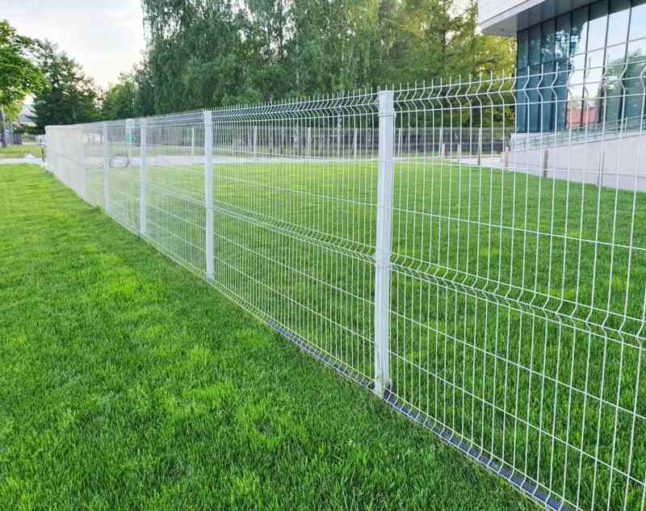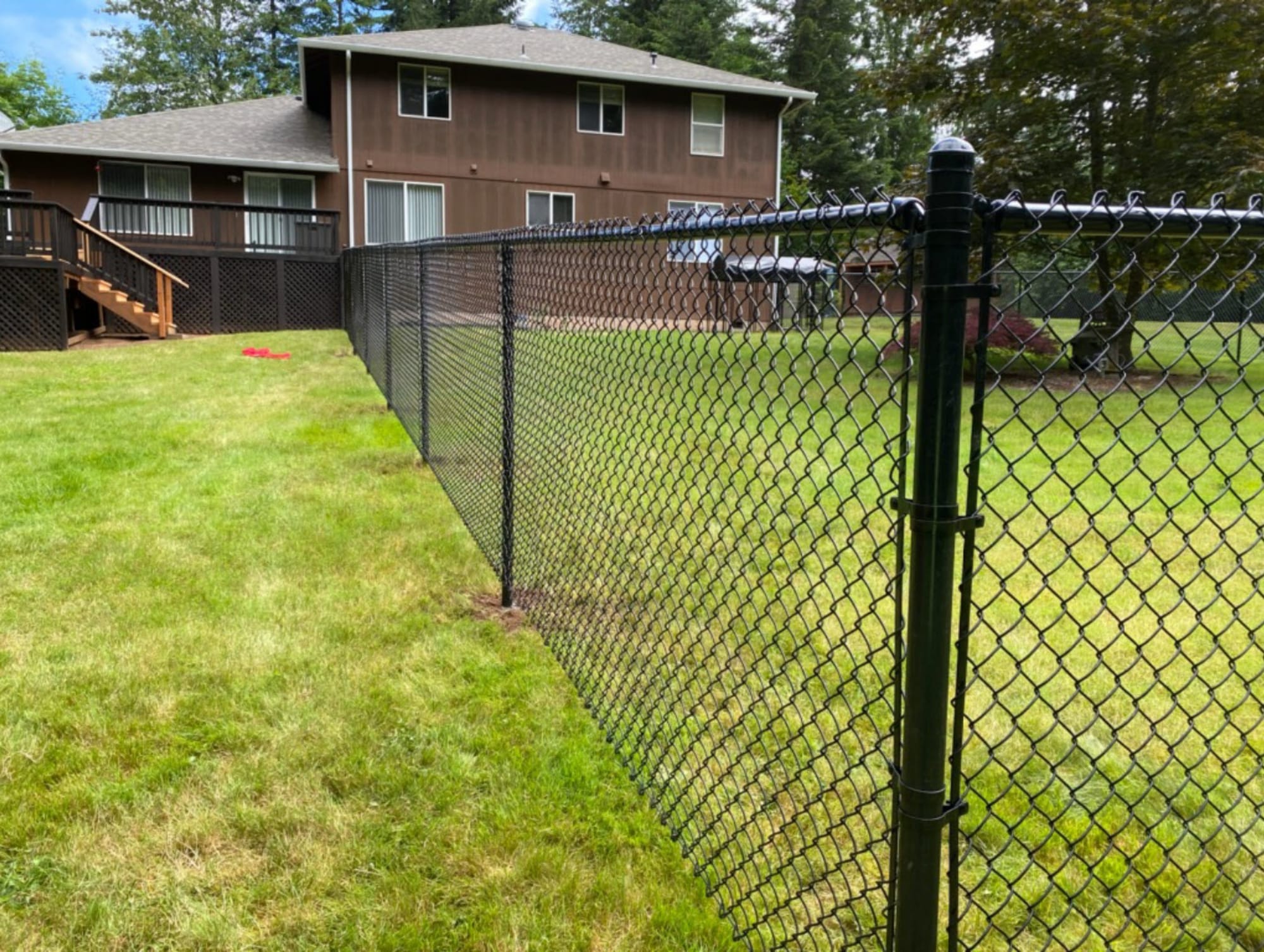All Categories
Featured
While a tall fencing might seem like the best choice, the suitable height depends on a number of elements, including safety and security needs, neighborhood regulations, and the products utilized. Below, we'll outline crucial considerations to help you pick the perfect fence elevation for ideal protection.
![]()
If you stay in a community regulated by a homeowners' association (HOA), you need to likewise review any type of specific guidelines they have for fence height, style, and materials. Complying with these policies ensures you avoid legal concerns and keep an excellent connection with your neighbors.
Taller fences are much more difficult to range and can substantially lower the probability of burglaries. Adding features like sharp tops, barbed cord, or also electric secure fencing can additionally enhance the obstacle's safety. A fencing that reaches 8 feet or higher is often efficient at stopping most individuals from quickly leaping over it.
![]()
Wooden Fences: While wood fences offer privacy, they can be simple to climb up, specifically if there are no anti-climb attributes. For optimal protection, consider a wood fencing that's 6 to 8 feet tall with sharp tops or trellis extensions that make it tougher to scale. Chain-Link Fences: Chain-link fences are typically much more affordable and resilient than wood, and they can be developed to the required height for safety. To increase deterrence, think about including barbed or razor cable on the top. These attributes discourage climbing and make the fencing more challenging to breach. Wrought Iron Fencings: Wrought iron fencings are frequently made use of for high-security purposes because of their stamina and toughness. Their vertical bars make it tough to climb up, and they can be built to 6 to 8 feet high with additional spikes or decorative anti-climb functions to additional secure the boundary. Plastic Fences: Vinyl is an excellent selection if you require a solid, personal fence, but like wood, vinyl fencings may require extra height or security functions to prevent climbing. Choose for a fence that is at least 6 feet high to make sure privacy and security. Each product supplies various advantages in terms of aesthetic appeals, toughness, and upkeep, so it is necessary to consider your details needs and choices when picking a fencing.
Anti-Climb Attributes: Installing sharp or pointed tops, trellis expansions, or security spikes on top of the fence makes it harder for any individual to scale the fence. These attributes work as a strong deterrent to possible intruders. Barbed or Razor Wire: Adding barbed cable or razor cable at the top of your fence increases safety substantially. This is commonly utilized in high-security locations, such as industrial properties, yet can also be an excellent option for properties in risky locations. Electric Fencing: For top-level safety and security, you may intend to take into consideration including an electric fencing to your residential or commercial property. Electric secure fencing, when set up effectively, can develop a solid deterrent while remaining fairly discreet. It delivers a moderate shock to anybody who attempts to touch or climb the fence. Incorporating height with these added attributes ensures that your fence provides the highest degree of safety.
Stabilizing the demand for privacy and protection while preserving the aesthetic appeal of your building can help you choose the right elevation and material for your fence. See to it that your fence matches the overall design of your home and doesn't negatively affect the visual allure.
![]()
By thoroughly thinking about all these aspects, you can produce a safe, personal, and appealing limit around your residential property that supplies both satisfaction and defense.

- Understand Citizen Rules and Zoning Laws. The very first step in picking your fencing elevation is to acquaint yourself with regional regulations. Numerous communities have zoning laws that determine the optimum allowable elevation for fencings, particularly in front yards and along residential or commercial property lines. Generally, front lawn fences are limited to 3 to 4 feet, while backyard fencings can be as tall as 6 to 8 feet or more. Some locations may require a permit for fences over a particular height, so it's critical to get in touch with your neighborhood zoning office before starting building and construction.
If you stay in a community regulated by a homeowners' association (HOA), you need to likewise review any type of specific guidelines they have for fence height, style, and materials. Complying with these policies ensures you avoid legal concerns and keep an excellent connection with your neighbors.
- Determine the Preferred Degree of Protection. The level of protection you need is a significant variable in identifying the perfect fence elevation. A fence between 4 to 6 feet may be sufficient if you're looking to hinder informal invaders or maintain youngsters and pet dogs inside the lawn. However, for higher safety demands-- such as safeguarding versus intruders or making certain security in high-crime areas-- you might need a taller fence. A fence height of 6 to 8 feet is usually advised for optimal security.
Taller fences are much more difficult to range and can substantially lower the probability of burglaries. Adding features like sharp tops, barbed cord, or also electric secure fencing can additionally enhance the obstacle's safety. A fencing that reaches 8 feet or higher is often efficient at stopping most individuals from quickly leaping over it.
- Pick the Right Product for Your Fence. The product of your fencing plays a crucial duty in its ability to offer security. While taller fences are much better for protection, the kind of material you use can enhance or impede the performance of the height. Below are some popular fence products for safety and security:

Wooden Fences: While wood fences offer privacy, they can be simple to climb up, specifically if there are no anti-climb attributes. For optimal protection, consider a wood fencing that's 6 to 8 feet tall with sharp tops or trellis extensions that make it tougher to scale. Chain-Link Fences: Chain-link fences are typically much more affordable and resilient than wood, and they can be developed to the required height for safety. To increase deterrence, think about including barbed or razor cable on the top. These attributes discourage climbing and make the fencing more challenging to breach. Wrought Iron Fencings: Wrought iron fencings are frequently made use of for high-security purposes because of their stamina and toughness. Their vertical bars make it tough to climb up, and they can be built to 6 to 8 feet high with additional spikes or decorative anti-climb functions to additional secure the boundary. Plastic Fences: Vinyl is an excellent selection if you require a solid, personal fence, but like wood, vinyl fencings may require extra height or security functions to prevent climbing. Choose for a fence that is at least 6 feet high to make sure privacy and security. Each product supplies various advantages in terms of aesthetic appeals, toughness, and upkeep, so it is necessary to consider your details needs and choices when picking a fencing.
- Include Security Attributes for Additional Protection. While elevation is necessary, adding extra safety and security features to your fencing can enhance its performance. Consider the adhering to enhancements:
Anti-Climb Attributes: Installing sharp or pointed tops, trellis expansions, or security spikes on top of the fence makes it harder for any individual to scale the fence. These attributes work as a strong deterrent to possible intruders. Barbed or Razor Wire: Adding barbed cable or razor cable at the top of your fence increases safety substantially. This is commonly utilized in high-security locations, such as industrial properties, yet can also be an excellent option for properties in risky locations. Electric Fencing: For top-level safety and security, you may intend to take into consideration including an electric fencing to your residential or commercial property. Electric secure fencing, when set up effectively, can develop a solid deterrent while remaining fairly discreet. It delivers a moderate shock to anybody who attempts to touch or climb the fence. Incorporating height with these added attributes ensures that your fence provides the highest degree of safety.
- Take Into Consideration Privacy and Aesthetic Preferences. While security ought to be your key concern, it's likewise essential to think about the aesthetic charm of your fence. High fencings might provide protection, but they can sometimes appear imposing or hostile. If personal privacy is a concern, a strong wood or vinyl fence can supply both safety and security and seclusion, while a functioned iron fence offers safety with an open sight.
Stabilizing the demand for privacy and protection while preserving the aesthetic appeal of your building can help you choose the right elevation and material for your fence. See to it that your fence matches the overall design of your home and doesn't negatively affect the visual allure.

- Final Ideas on Fence Height and Safety. Choosing the best fence height for ideal safety involves balancing several elements, consisting of local guidelines, the degree of protection needed, the material of the fencing, and added safety features. In general, a fencing elevation of 6 to 8 feet is optimal for most household properties, with taller fences giving an included layer of protection for high-risk locations.
By thoroughly thinking about all these aspects, you can produce a safe, personal, and appealing limit around your residential property that supplies both satisfaction and defense.
Latest Posts
Find Out Cut Costs on Car Maintenance with Montclare Auto Repair’s Special Deals
Published May 29, 25
1 min read
Boost Your Building with Expenses Door Equipment
Published May 26, 25
1 min read
Find Affordable Auto Repairs with Montclare’s Limited-Time Service Specials
Published May 24, 25
1 min read
More
Latest Posts
Find Out Cut Costs on Car Maintenance with Montclare Auto Repair’s Special Deals
Published May 29, 25
1 min read
Boost Your Building with Expenses Door Equipment
Published May 26, 25
1 min read
Find Affordable Auto Repairs with Montclare’s Limited-Time Service Specials
Published May 24, 25
1 min read